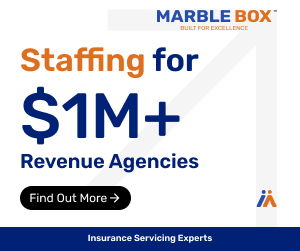Bars, nightclubs, and restaurants serve alcoholic beverages, and often these drinks and the people who consume them do not mix well. Patrons may imbibe more than they should, and their inhibitions, to the extent they have any, may be forgotten. Some of these patrons may turn violent. If the establishment’s insurance agent has not obtained appropriate liability coverage, the barroom brawl may not be the only fight that results.
A Colorado insurance agency had an established relationship with a nightclub owner, having arranged coverage for two clubs he owned and operated. When he opened a third, he asked the agency to obtain liability coverage. The agency secured commercial general liability coverage from one carrier and liquor liability coverage from another.
A woman was physically assaulted and injured on the grounds of the nightclub. The attacker was likely another patron at the club, as the Colorado Court of Appeals’ opinion described the identity as unknown. She sued the company that owned the club, which in turn submitted claims to its two liability insurers. However, both policies contained an “assault and battery exclusion”. The CGL carrier refused to provide even defense coverage. The liquor liability carrier provided defense under a reservation of rights.
Eventually, a settlement between the woman and the nightclub owner was negotiated. The liquor liability insurer would pay her $15,000, and an arbitration judge would determine further damages. The judge did eventually award her additional damages. The owner and the victim agreed that she would be entitled to any proceeds from a lawsuit against the insurance agency, in exchange for her promise not to execute on her judgment against the owner.
The owner sued the agency for negligence and negligent misrepresentation of the terms of the policies. He cited his longstanding relationship with the agency and his request for assault and battery coverage. The agency, he argued, had a legal obligation to obtain the appropriate insurance coverage, including assault and battery liability coverage. He also claimed that the agency never informed him that the insurance did not apply to assaults that occurred on the premises.
The trial court dismissed the suit, finding that the agreed-upon settlement did not establish that the owners incurred damages as a result of the agency’s alleged negligence or misrepresentation. The owner appealed, and the appellate court ruled in his favor.
The court explained that a settlement agreement such as the one reached between the owner and the assault victim was valid under Colorado court precedents. Because the owner and the victim did not stipulate an amount of damages in advance (leaving that up to the arbitration judge), the owner did not have an obligation to prove that the amount agreed to was reasonable. Also, while the agency could argue that the other two parties were colluding and possibly committing fraud, it would have to prove those claims in court. Accordingly, the court said that the trial court’s dismissal of the case was premature.
The agency argued that it was impermissible for the owner to assign his claims against it to the assault victim. However, the court found no reason to prohibit the agreement.
Lastly, the agency argued that, even if the policies provided assault and battery coverage, they would not have covered an assault by one patron against another. However, the court noted that the CGL insurer’s denial letter implied that the loss might have been covered absent the exclusion. Since the availability of coverage was in dispute, the court said that this question should also be resolved by a trial court, making dismissal premature.
It may have been true that the agency could not find the coverage for its client. If so, then it should have clearly communicated that fact to him in writing. Most states require agents and brokers to obtain the requested coverage or inform the client that they are unable to do so. This agency might have had a convincing defense if it could have produced a letter informing the club owner of the coverage gap.
Documentation of interactions with clients can be an agency’s best defense against E&O claims. Notes on any given conversation may someday be important, so consistent documentation is essential for all agencies.











